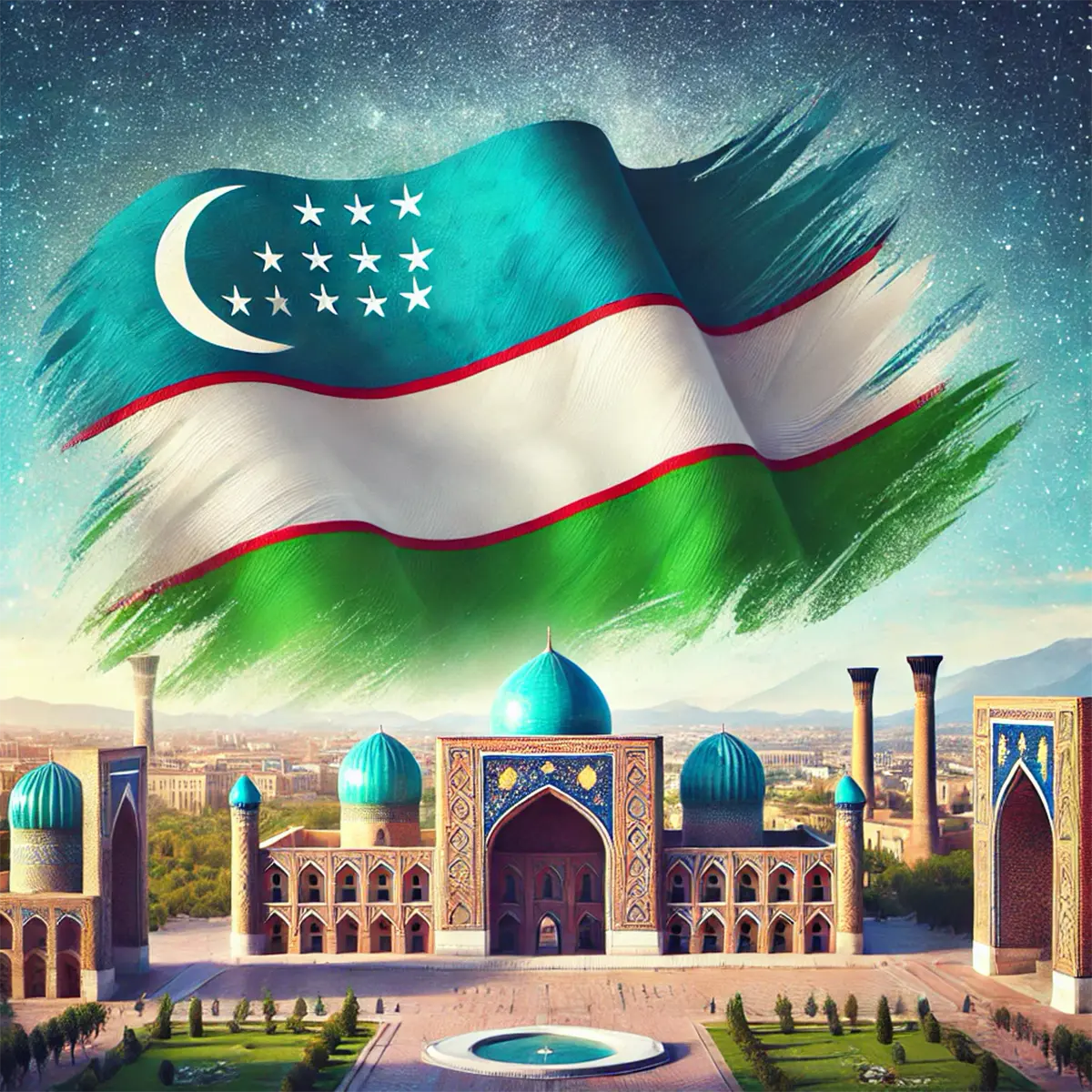After conquering the territories around 1510, the Uzbeks controlled the areas southeast of the Aral Sea. For a long time (from 1511 to 1740), they used a flag with a white background and a blue crescent in the upper left corner.
In 1785, the Bukhara Emirate was created, which became the second state in the steppes to the north and east of modern Uzbekistan. The emirate's territory included several regions of modern Uzbekistan, Tajikistan, and Turkmenistan. It had its own flag with a green background surrounded by a gold and black border. On the green background were a hand, a crescent moon, a star, and inscriptions. In 1917, the flag of the Emirate of Bukhara was replaced by a black flag with a green outline and a golden crescent and star. In 1917, the Turkestan Autonomy was formed, which had its own flag - red and blue with a white crescent and a five-pointed star.

In September 1920, Bukhara was captured and became the Bukhara People's Soviet Republic with its own flag, consisting of green and red stripes, a golden crescent and star, and a crossed hammer and sickle inside the star.
The Turkestan Autonomous Soviet Socialist Republic became the first Soviet autonomous republic. The flag of this republic consisted of a red field with yellow text in the upper left corner. In 1921, the flag was changed by adding a white border around the text.

In 1922 Uzbekistan became a republic of the Union of Soviet Socialist Republics, and in 1925 the united territories became the Karakalpak Autonomous Soviet Socialist Republic and adopted a new flag. Between 1952 and 1991, the flag of the Uzbek SSR was changed to red with a blue stripe in the middle, framed by two thin white stripes, and a hammer and sickle and five-pointed star in the upper left corner.

After the collapse of the Soviet Union in 1991, Uzbekistan and Karakalpakstan became independent countries with new flags. The flag of Karakalpakstan consisted of a horizontal tricolor-blue, gold, and green-with two red stripes in the middle and a white crescent with five white stars in the upper left corner. Uzbekistan adopted a new flag in 1991, consisting of blue, white, and green with red stripes on either side of the white and a crescent moon with 12 stars in the upper left corner. Both flags are still in use today.





